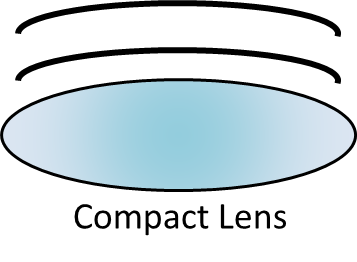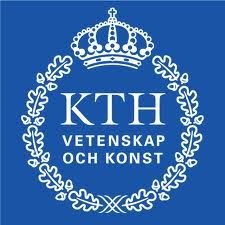
-
StatusOngoing
-
Status date2019-04-03
-
Activity Code7C.046
The objective of this project is to investigate lens antennas, and their ability to provide a cost-effective solution for SatCom on-the-move ground terminals. Lens antennas are associated with a high directivity, and beam scanning can be obtained by moving only the feed. Moreover, multiple simultaneous beams can be obtained in the same aperture. However, lenses suffer from a large physical size and the plane in which the feed should be moved to provide scanning is often curvilinear. In this project, we apply an appropriate lens transformation to reduce the size of the antenna and provide a simpler feeding mechanism enabling higher integration.
Lens antennas provides attractive properties in terms of directivity and scanning. However, the size of lens antennas is, for some applications, prohibitive. Related to this, there are two main challenges in this project:
- To reduce the height of the lens so that it is compliant with ground mobile environments. We employ a transformation of coordinates, within the framework of transformation optics, to reduce the size of the lens.
- To retain the attractive properties of lens antennas after the size reduction. The transformation of coordinates may impact the scanning capabilities and the directivity in an undesired manner, especially if the compression factor is large.
All available Satcom on-the-move systems are, to the best of our knowledge, based on one of two solutions: reflectors or arrays. Associated with these solutions, there are some advantages and disadvantages. Reflector antennas are relatively cheap and can easily provide the high gain necessary, but they are hard to steer electronically, and slow purely mechanical steering is often used. This may be sufficient on slow moving vehicles in communication with GEO stationary satellites but when one or both of the terminals (ground terminal or satellite) are moving fast (such as high-speed trains and LEO satellites), a faster scanning is needed. On the other hand, systems based on arrays can be made electronically reconfigurable, but they are very complex and expensive to manufacture. The proposed solution consists of a lens which offers purely electrical or hybrid electrical and mechanical beam switching/scanning capabilities and is cheap to manufacture with standard additive 3D printing.
The main objective of the project is to develop a cost-effective compact electronically steerable directive antenna for satellite communications on-the-move. The main features of the proposed solution are:
- Highly directive, comparable to previously reported array and reflector solutions. To achieve a high directivity, a lens is employed.
- Electronically or hybrid electronically and mechanically switchable/steerable beams. The electrical beam steering is achieved with multiple feeds. The feeds are placed in different points on the focal plane, each producing radiation in its own angular sector.
- Simultaneous communication with multiple satellites in one aperture. Different feeds can be used to transmit and receive simultaneously.
- Tx and Rx integrated in the same aperture.
- Reduced height of the antenna compared to conventional lenses.
- The lens can be manufactured with additive 3D printing, which results in a cost-effective manufacturing and allows for mass-production.
The antenna developed in this activity provides electrical or hybrid electrical and mechanical steerable beams. The architecture of the antenna is composed of two main parts.
- Gradient index lens, which provides the high gain. More specifically, a Luneburg lens is employed. A Luneburg lens is a rotationally symmetric inhomogeneous lens that can be excited from any direction on the contour, producing a directive beam at the opposite direction. The height of the antenna is reduced through a transformation of coordinates. This transformation also provides a simpler feeding, compared to conventional Luneburg lens antennas, which enables higher integration.
- Feeding network placed at the focal plane of the lens. The feeding network enables beam steering and multibeam capabilities. Moreover, the feeding network covers both Tx and Rx bands in order to be able to transmit and receive in the same aperture. For hybrid beam steering systems, the mechanical steering components of the system is included here as well.
The project is divided into four phases:
- Review of product requirements and available state-of-the-art.
- Study of transformation optics and its applicability to the lens design. Here, an antenna solution is proposed and verified in simulations.
- Validation of the proposed design. The design is also compared to existing solutions.
- System test in a real scenario. Eventual refinements to the design may be made.
We are defining the requirements of the product and reviewing the available literature and the state-of-the-art. After the requirements have been defined and a need established, the design phase will commence with these requirements and needs in mind.




